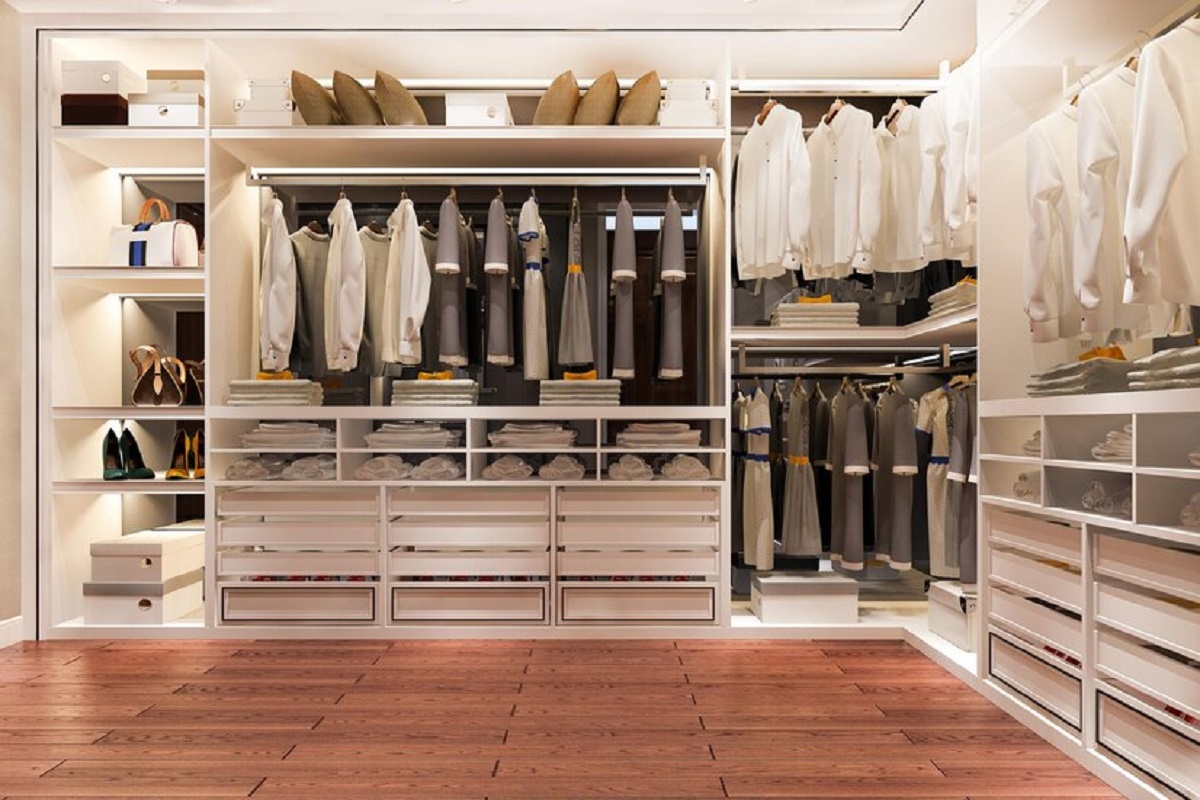Is your closet overflowing with clothes, shoes, and accessories? Do you find yourself struggling to locate items amidst the chaos? If so, it might be time to revamp your closet with a well-thought-out design that not only maximizes storage but also complements your personal style. Choosing the right closet design can significantly impact your daily routine and overall organization. In this guide, we will walk you through the key considerations to help you select the perfect closet design tailored to your needs and preferences. This content is presented by Hdecorideas.com.
Assess Your Storage Needs
The first step in choosing a closet design is understanding your storage requirements. Take inventory of your clothing, shoes, bags, and accessories. Consider whether you need more hanging space, shelves for folded items, or compartments for accessories. This assessment will serve as the foundation for your closet layout.
Evaluate Your Space
When planning your closet, it’s important to measure the available space and consider the type of closet design that would work best for your needs. Is it a walk-in closet, a reach-in closet, or a custom nook under the stairs? The dimensions of your space will dictate the type of design you can opt for. A walk-in closet offers more flexibility for customization, while a reach-in closet requires strategic space utilization. As you explore different closet by design pricing options, keep in mind that the right design can help you maximize your available space and create a more efficient and organized closet.
Choose a Style That Reflects You
Your closet design should seamlessly blend with your personal style and the aesthetics of your home. Are you drawn to minimalistic designs, or do you prefer a rustic and cozy feel? Choose closet materials, colors, and finishes that resonate with your taste.
Consider Accessibility
Ease of access is paramount in a functional closet. Opt for solutions that allow you to reach items effortlessly. Incorporate pull-out shelves, adjustable rods, and drawers with soft-closing mechanisms. This not only enhances usability but also prolongs the life of your closet components.
Customization for Your Wardrobe
Your wardrobe is unique, and your closet design should reflect that. If you have a vast shoe collection, include shelves or cubbies specifically designed for footwear. If you own a collection of ties or scarves, integrate racks or hooks to keep them organized.
Maximize Vertical Space
Don’t overlook the vertical space in your closet. Tall shelves and hanging storage can make the most of your room’s height. This is particularly useful for storing items you don’t need to access frequently.
Lighting Matters
Proper lighting can transform your closet experience. Consider LED lighting to ensure visibility in every corner. Illuminated shelves and hanging rods can add a touch of luxury while making it easier to select your outfits.
Utilize Adjustable Features
Flexibility is key in a closet design. Adjustable shelves, rods, and dividers allow you to modify the layout as your storage needs change over time. This adaptability ensures your closet remains efficient in the long run.
Incorporate Mirror Space
A mirror is a practical and stylish addition to any closet. It serves both functional and aesthetic purposes, allowing you to check your outfit and create a sense of depth within the space.
Blend Open and Closed Storage
Balance open and closed storage options to maintain an organized yet visually appealing closet. Open shelves can showcase your favorite pieces, while closed cabinets keep clutter out of sight.
Seek Professional Advice
If you’re unsure about the best closet design for your space, consult with a professional closet designer. They can provide expert insights, suggest innovative solutions, and create a design that aligns with your vision.
Budget Considerations
Closet designs come in a wide range of price points. Set a budget before you start planning to ensure that your design aspirations align with your financial constraints.
DIY vs. Professional Installation
Decide whether you want to tackle the closet installation yourself or hire professionals. While DIY can save costs, professional installation ensures a polished and precise result.
Maintenance and Upkeep
A well-organized closet requires regular maintenance. Consider how easy it is to clean and maintain your chosen design. Opt for materials that are durable and easy to care for.
Final Touches and Personalization
Once your closet design is in place, add personal touches such as decorative hooks, inspirational quotes, or a cozy rug. These details make your closet not just functional, but also a reflection of your personality.
In conclusion, choosing the right closet design involves a thoughtful process that considers your storage needs, space constraints, personal style, and functionality. By assessing these factors and exploring the various design elements, you can create a closet that not only organizes your belongings but also adds value to your daily routine.
FAQs
Can I customize my closet design for my growing wardrobe?
Absolutely! A well-designed closet should accommodate your evolving storage needs.
What lighting options work best for closets?
LED lighting is a popular choice as it’s energy-efficient and provides bright, uniform illumination.
Are professional closet design services expensive?
The cost varies, but professional services often provide tailored solutions that maximize your space and investment.
Can I combine different closet styles in one design?
Yes, combining open shelving, closed cabinets, and hanging space can create a balanced and functional closet.
How often should I review and reorganize my closet?
A thorough review every season and occasional decluttering sessions will help you maintain an organized closet.
For an organized and stylish closet that suits your lifestyle, follow these guidelines and unleash the potential of your space.

